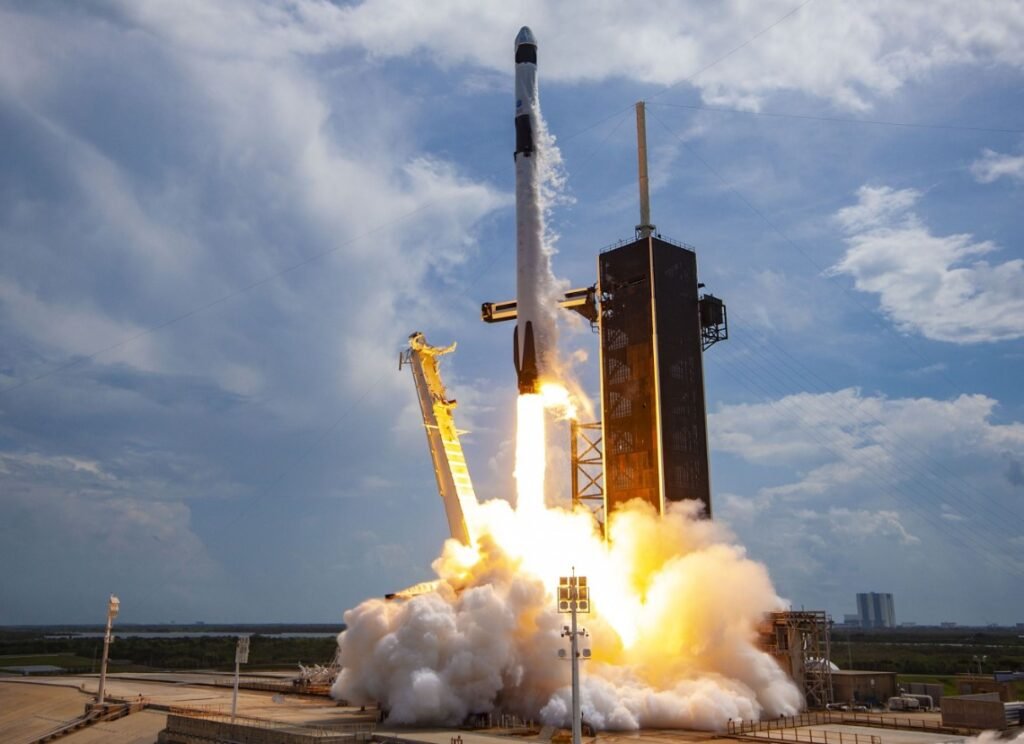SpaceX, the private space company founded by Elon Musk, has successfully launched four private astronauts to the International Space Station (ISS) on Wednesday, Jan. 17, 2024. The mission, dubbed Ax-3, is the third commercial spaceflight organized by Axiom Space, a Houston-based company that aims to build the world’s first commercial space station.
The four astronauts who boarded the SpaceX Dragon spacecraft, named Freedom, are:
- Michael López-Alegría, the commander of the mission and a former NASA astronaut who has flown to space four times and holds the record for the most spacewalks by an American. He is also the vice president of business development at Axiom Space.
- Walter Villadei, the pilot of the mission and a colonel in the Italian Air Force. He is an experienced fighter pilot and test pilot who has logged more than 3,000 flight hours on various aircraft. He is also a graduate of the U.S. Naval Test Pilot School and the International Space University.
- Alper Gezeravcı, a mission specialist and Turkey’s first astronaut. He is a mechanical engineer and entrepreneur who founded several companies in the fields of renewable energy, biotechnology, and aerospace. He is also a philanthropist who supports education and social projects in Turkey and abroad.
- Marcus Wandt, a mission specialist and a project astronaut for the European Space Agency (ESA). He is a physicist and engineer who has worked on several ESA missions, such as the Rosetta comet probe and the BepiColombo Mercury orbiter. He is also an avid adventurer who enjoys mountaineering, sailing, and skiing.

The Launch and Docking
The Ax-3 mission lifted off from Launch Complex 39A at NASA’s Kennedy Space Center in Florida at 5:11 p.m. EST (2211 GMT) on a SpaceX Falcon 9 rocket. The launch was broadcast live by SpaceX, Axiom Space, and NASA, and was watched by millions of people around the world.
The Dragon spacecraft separated from the rocket’s second stage about 15 minutes after liftoff and began its journey to the ISS. The spacecraft performed a series of orbital maneuvers and rendezvous procedures to align itself with the station. The crew also tested the spacecraft’s systems and communicated with the ground teams.
The Dragon spacecraft docked to the space-facing port on the ISS’s Harmony module at approximately 5:15 a.m. EST (1015 GMT) on Friday, Jan. 19. The docking was also broadcast live by the mission partners. The crew was welcomed by the seven astronauts already on board the station, who are part of the Expedition 69/70 crew.
The Mission Objectives
The Ax-3 mission is expected to last at least two weeks, during which the crew will conduct various activities on the ISS. Some of the mission objectives are:
- To perform scientific experiments and technology demonstrations in microgravity, such as testing a new bioreactor, a nanosatellite deployer, and a virtual reality headset.
- To conduct educational and outreach events, such as live sessions with students, media interviews, and social media posts.
- To showcase the potential of commercial spaceflight and inspire the next generation of space explorers and entrepreneurs.
- To prepare for the future construction and operation of the Axiom Station, which will be attached to the ISS in 2025 and eventually replace it as a commercial orbital outpost.
The Ax-3 mission is part of Axiom Space’s vision to create a thriving human presence in low Earth orbit and beyond. The company plans to launch more private astronaut missions in the coming years, as well as professional astronauts from various countries and organizations. The company also aims to offer space tourism, research, manufacturing, and entertainment services to its customers.
The Ax-3 mission is also a milestone for SpaceX, which has become a leading provider of commercial and government space transportation. The company has launched 26 crewed and cargo missions to the ISS under NASA’s Commercial Resupply Services and Commercial Crew Program contracts. The company also has plans to launch its own private spaceflight missions, such as the Inspiration4 mission in 2023 and the DearMoon mission in 2024.
The Ax-3 mission is a demonstration of the growing collaboration and innovation in the space industry, as well as the increasing accessibility and affordability of space travel. The mission is expected to pave the way for more opportunities and discoveries in the final frontier.
